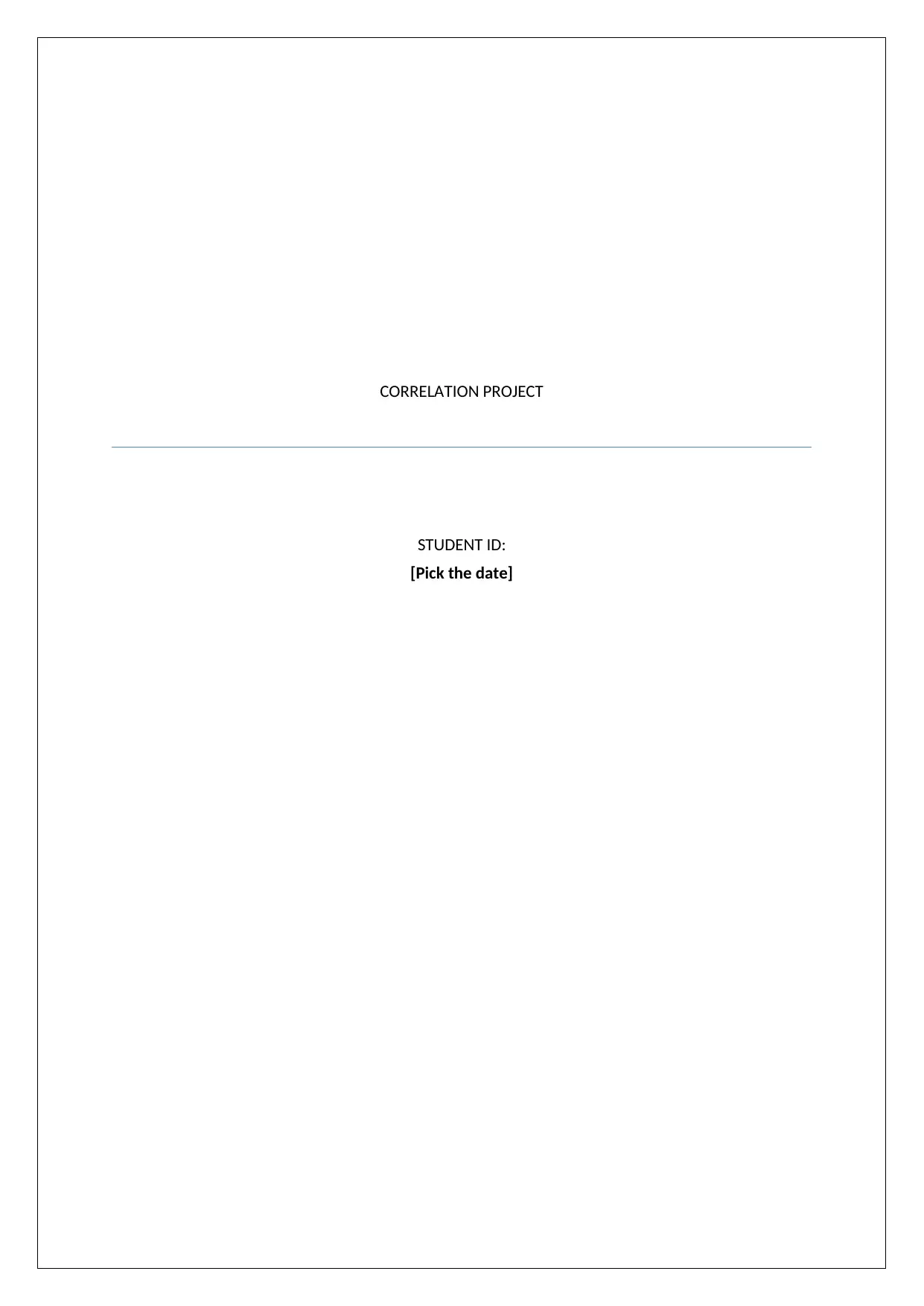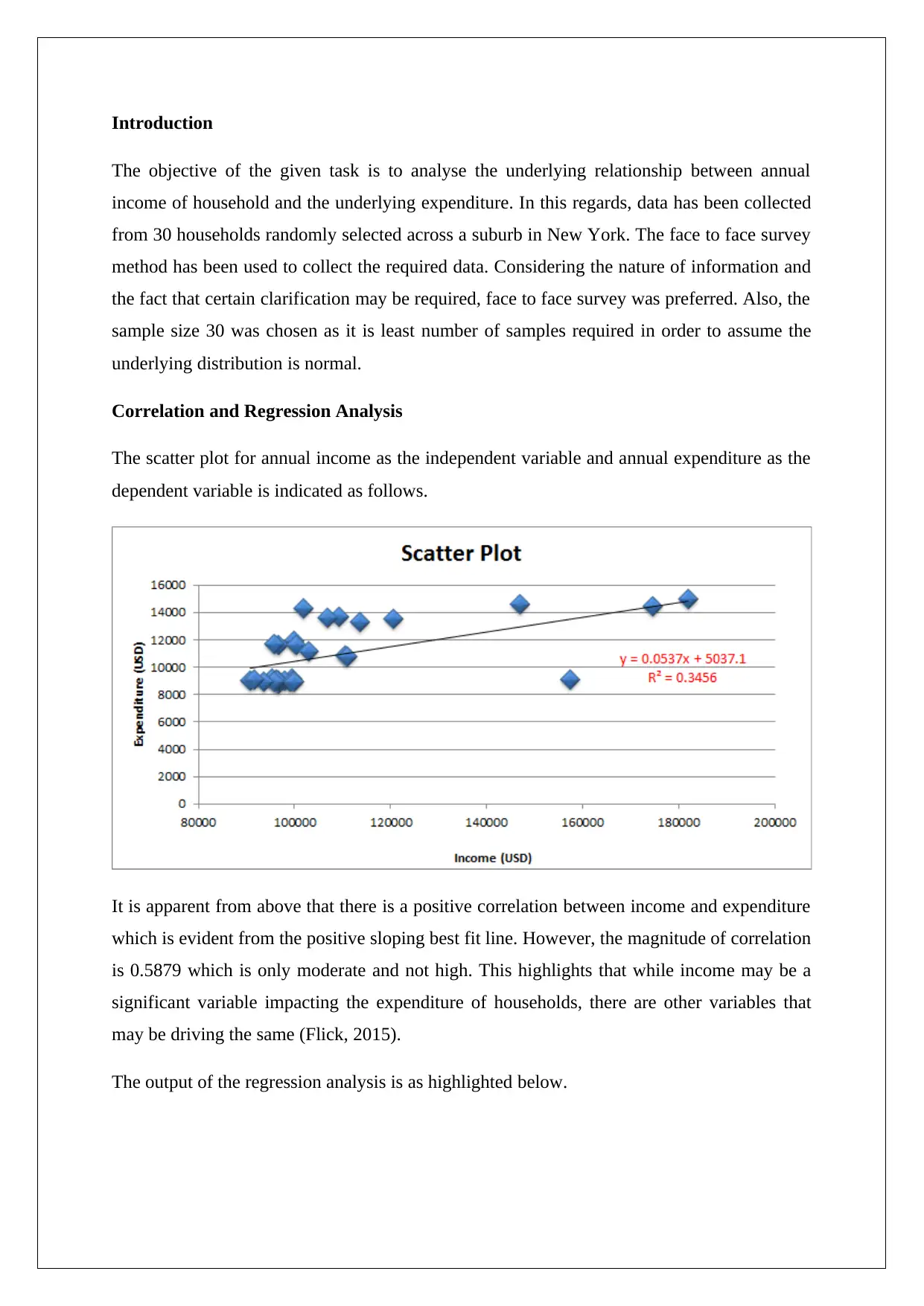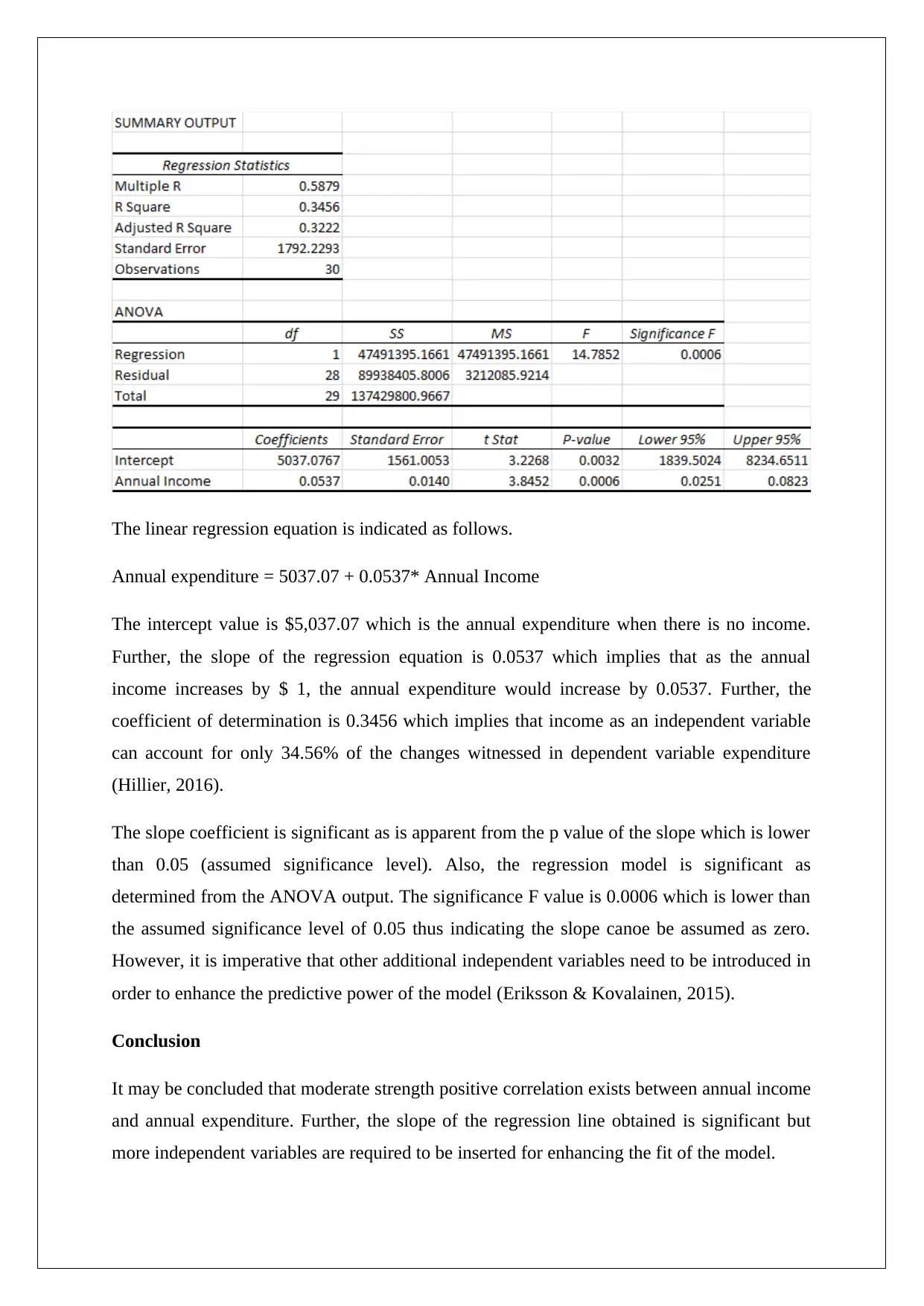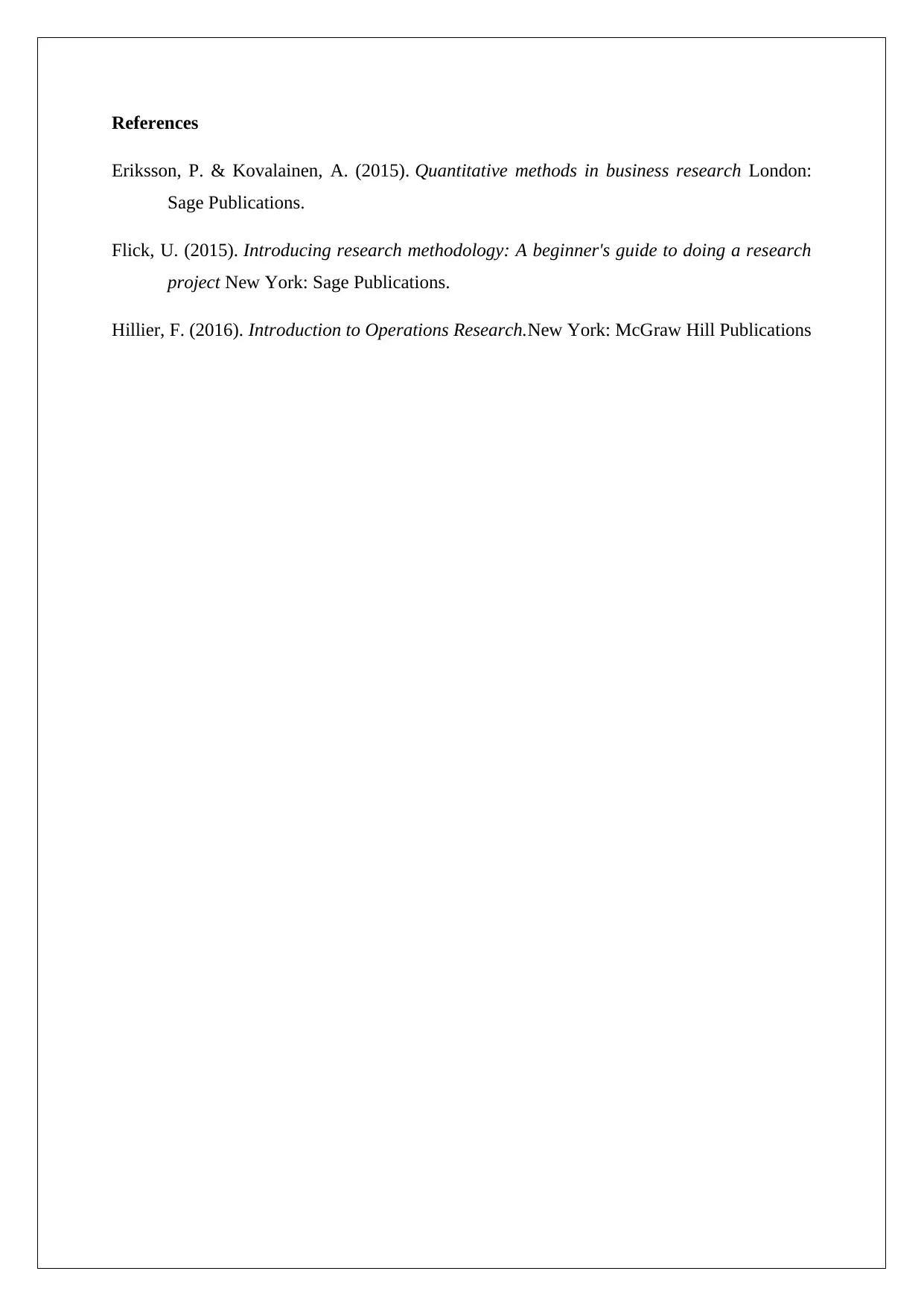Correlation Project: Income, Expenditure, and Regression Analysis
VerifiedAdded on 2023/05/29
|4
|538
|377
Project
AI Summary
This project investigates the correlation between annual household income and expenditure using data collected from a random sample of 30 households in a New York suburb. Face-to-face surveys were employed for data collection, and correlation and regression analyses were performed. The results indicate a moderate positive correlation (0.5879) between income and expenditure, with the regression equation showing that annual expenditure increases by $0.0537 for every $1 increase in annual income. However, income only accounts for 34.56% of the variance in expenditure, suggesting other factors influence household spending. The regression model is statistically significant, but the project concludes that additional independent variables are needed to improve its predictive power. Desklib provides access to similar projects and study resources for students.
1 out of 4










![[object Object]](/_next/static/media/star-bottom.7253800d.svg)